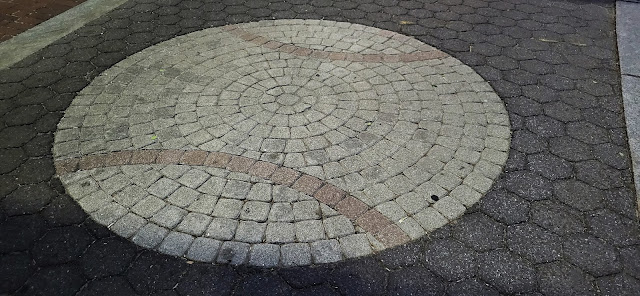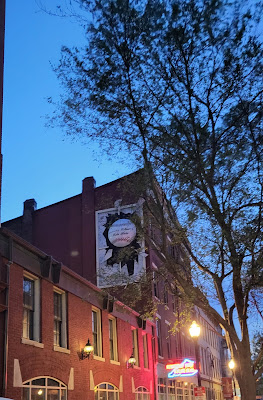
 It's always fun when you are with like-minded, adventurous peeps. We have a wee bit of evening left in Louisville tonight and are off looking for unique things to spice up our trip.
It's always fun when you are with like-minded, adventurous peeps. We have a wee bit of evening left in Louisville tonight and are off looking for unique things to spice up our trip.
The first stop is at the Witch's Tree. According to local lore, in the late 19th century, this tree was the gathering place for a coven of witches. There they performed their ceremonies and generally didn't create too much of a nuisance. Until, that is, a city planning committee decided to remove the tree ahead of the annual May Day celebration. This displeased the witches greatly. So much so, they cast a curse. And exactly 11 months to the day after the tree was cut down, the city suffered a storm so severe that it was generally assumed that the witches had made good on their curse and summoned a storm demon. During the storm, lightning struck the stump of the old witches tree and a new tree began growing there. Not a healthy, happy tree, but rather the otherworldly thing that stands there now.

 This was a period of unrest and attacks on Irish and German immigrants, not long after the infamous Bloody Monday incident in 1855. In order to prove his patriotism and loyalty to American, he carved inscriptions and busts of American notables into the facade of the house. Among the incised mottos is one reading, "Hail to the city of Louisville." Heigold died shortly after the facade was completed in 1965, and his son Charles lived there until his death in 1925. The Heigold house was one of only a few structures on the Point to survive the Great Flood of 1937, and the only one still inhabitable. The house survived until 1953 when the city purchased the property in order to expand the city dump. Mayor Charles Farnsley saved the facade of the house from demolition by moving it to Thruston Park on River Road between Adams and Ohio streets. In June of 2007, the facade was moved to the entrance of historic Frankfort Avenue.
This was a period of unrest and attacks on Irish and German immigrants, not long after the infamous Bloody Monday incident in 1855. In order to prove his patriotism and loyalty to American, he carved inscriptions and busts of American notables into the facade of the house. Among the incised mottos is one reading, "Hail to the city of Louisville." Heigold died shortly after the facade was completed in 1965, and his son Charles lived there until his death in 1925. The Heigold house was one of only a few structures on the Point to survive the Great Flood of 1937, and the only one still inhabitable. The house survived until 1953 when the city purchased the property in order to expand the city dump. Mayor Charles Farnsley saved the facade of the house from demolition by moving it to Thruston Park on River Road between Adams and Ohio streets. In June of 2007, the facade was moved to the entrance of historic Frankfort Avenue.














No comments:
Post a Comment